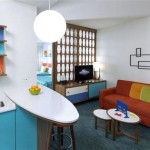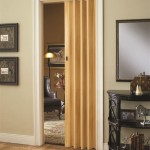Minimalist Interior Design: A Guide to Simplicity and Functionality
Minimalist interior design is a popular style that emphasizes simplicity, functionality, and clean lines. It focuses on creating a serene and uncluttered living space by utilizing a limited color palette, essential furniture, and carefully curated decor. This design aesthetic prioritizes quality over quantity, promoting a sense of calm and tranquility within the home.
Key Principles of Minimalist Interior Design
Minimalism is more than just removing clutter; it's a philosophy that permeates every aspect of design. Here are some core principles to consider when embracing this style:
- Less is More: Minimalist design emphasizes the importance of removing unnecessary items, leaving only the essentials. This minimizes visual noise and creates a sense of spaciousness.
- Neutral Color Palette: Minimalist interiors often feature a neutral color palette, typically black, white, gray, or beige. These colors provide a clean backdrop for accent colors that can be introduced through furniture, artwork, or accessories.
- Clean Lines and Simple Shapes: Geometric shapes and clean lines dominate minimalist design. Furniture with sleek silhouettes and simple structures are preferred over ornate pieces.
- Natural Materials: Minimalist design often incorporates natural materials such as wood, stone, and leather. These materials add warmth and texture, contributing to a sense of grounding and authenticity.
- Functionality over Decoration: Every item in a minimalist space serves a practical purpose. The focus is on creating a functional and efficient environment rather than a visually overwhelming one.
Benefits of Minimalist Interior Design
Minimalist design offers several benefits beyond its aesthetic appeal. These benefits include:
- Reduced Stress and Anxiety: Clutter can be a significant source of stress and anxiety. A minimalist space offers a calming and peaceful environment, reducing mental clutter and promoting relaxation.
- Enhanced Productivity and Focus: A clutter-free environment allows for better concentration and focus, leading to increased productivity in work or study settings.
- Improved Organization and Efficiency: The emphasis on functionality in minimalist design encourages efficient use of space and resources, promoting order and organization.
- Enhanced Sense of Space: By removing unnecessary items and utilizing a neutral color palette, minimalist design creates an illusion of greater space, making even smaller rooms feel larger.
- Increased Sustainability: Minimalist principles encourage conscious consumption and the use of high-quality, durable items, promoting a more sustainable approach to interior design.
Tips for Creating a Minimalist Space
If you're considering embracing minimalism, here are some tips to get you started:
- Declutter and Purge: Start by decluttering your space, removing any items that you don't use or love. Donate, sell, or discard items that no longer serve a purpose.
- Choose a Neutral Color Palette: Opt for a neutral color palette as a foundation for your space. You can add pops of color through accent pieces.
- Invest in Quality Furniture: Choose durable, multi-functional furniture with clean lines. Consider investing in timeless pieces that will last for years to come.
- Keep Surfaces Clear: Avoid overcrowding surfaces with unnecessary items. Keep countertops and shelves tidy and organized.
- Embrace Negative Space: Allow for empty space in your design. This will create a sense of calm and balance.
- Curate Your Decor: Carefully select decorative items that add a touch of personality without overwhelming the space.
- Minimize Visual Distractions: Avoid excessive patterns and textures. Opt for simple and clean designs that promote a sense of tranquility.
Minimalist interior design is a versatile style that can be adapted to suit individual preferences and needs. By embracing simplicity and functionality, you can create a peaceful and inspiring living space that fosters a sense of calm and well-being.

Everything You Need To Know About Minimalist Design

Minimalist Interior Design Defined And How To Make It Work Décor Aid

Luxury Minimalist Interior Design Ideas Margarita Bravo

Minimal Interior Design A Detailed Guide To Minimalist House

11 Minimalist Home Design Tips And Ideas Designcafe

9 Essential Home Ideas For A Minimalist Goodhomes Co In

Interior Design Tips To Make Your Home Look Minimal

What Is Minimalist Interior Design Style Tarkett

Everything You Need To Know About Minimalist Design

Minimalist Interior Design Ideas To Enhance Your House Beautiful Homes








